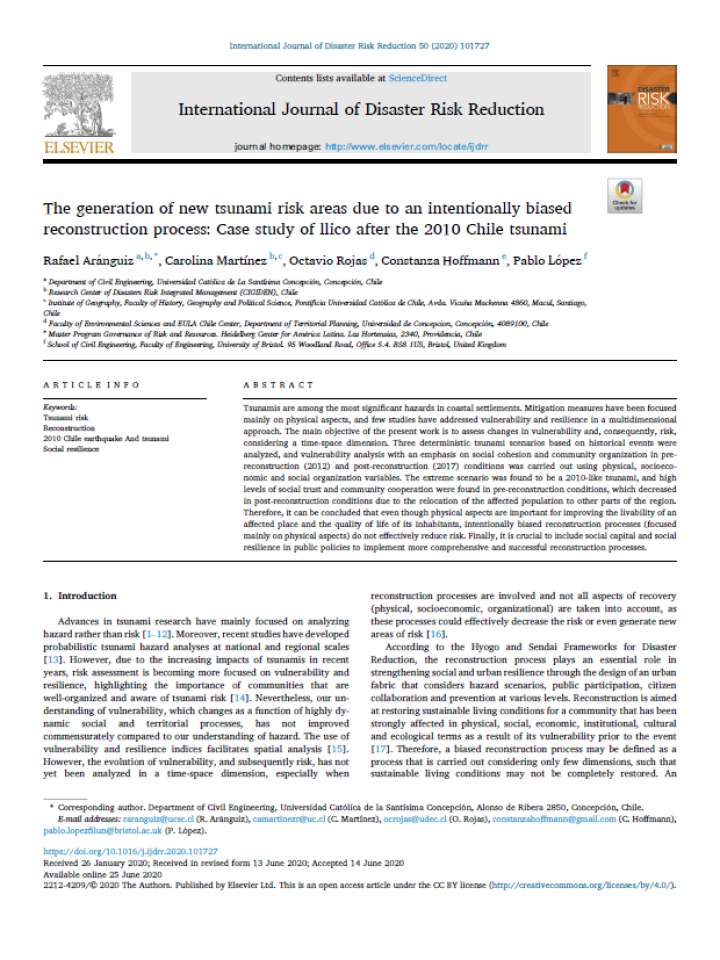The generation of new tsunami risk areas due to an intentionally biased reconstruction process: Case study of llico after the 2010 Chile tsunami
The main objective of the present work is to assess changes in vulnerability and, consequently, risk, considering a time-space dimension. Three deterministic tsunami scenarios based on historical events were analyzed, and vulnerability analysis with an emphasis on social cohesion and community organization in pre-reconstruction (2012) and post-reconstruction (2017) conditions was carried out using physical, socioeconomic and social organization variables.
The extreme scenario was found to be a 2010-like tsunami, and high levels of social trust and community cooperation were found in pre-reconstruction conditions, which decreased in post-reconstruction conditions due to the relocation of the affected population to other parts of the region.
Therefore, it can be concluded that even though physical aspects are important for improving the livability of an affected place and the quality of life of its inhabitants, intentionally biased reconstruction processes (focused mainly on physical aspects) do not effectively reduce risk. Finally, it is extremely important to include social capital and social resilience as crucial elements in public policies to implement more comprehensive and successful reconstruction processes in developing countries that may be affected by many natural hazards such as earthquakes, tsunamis, river floods, volcanic eruptions and storm surges.
Explore further
